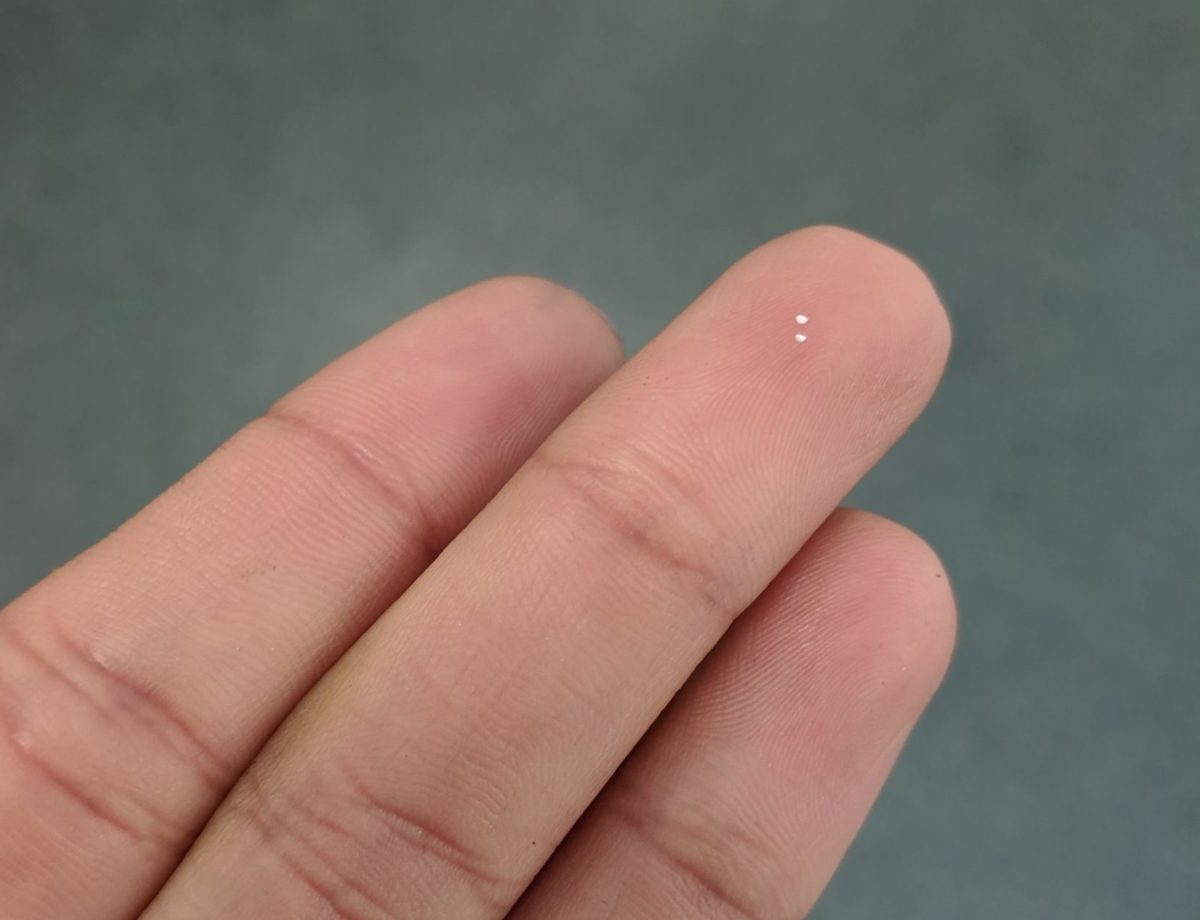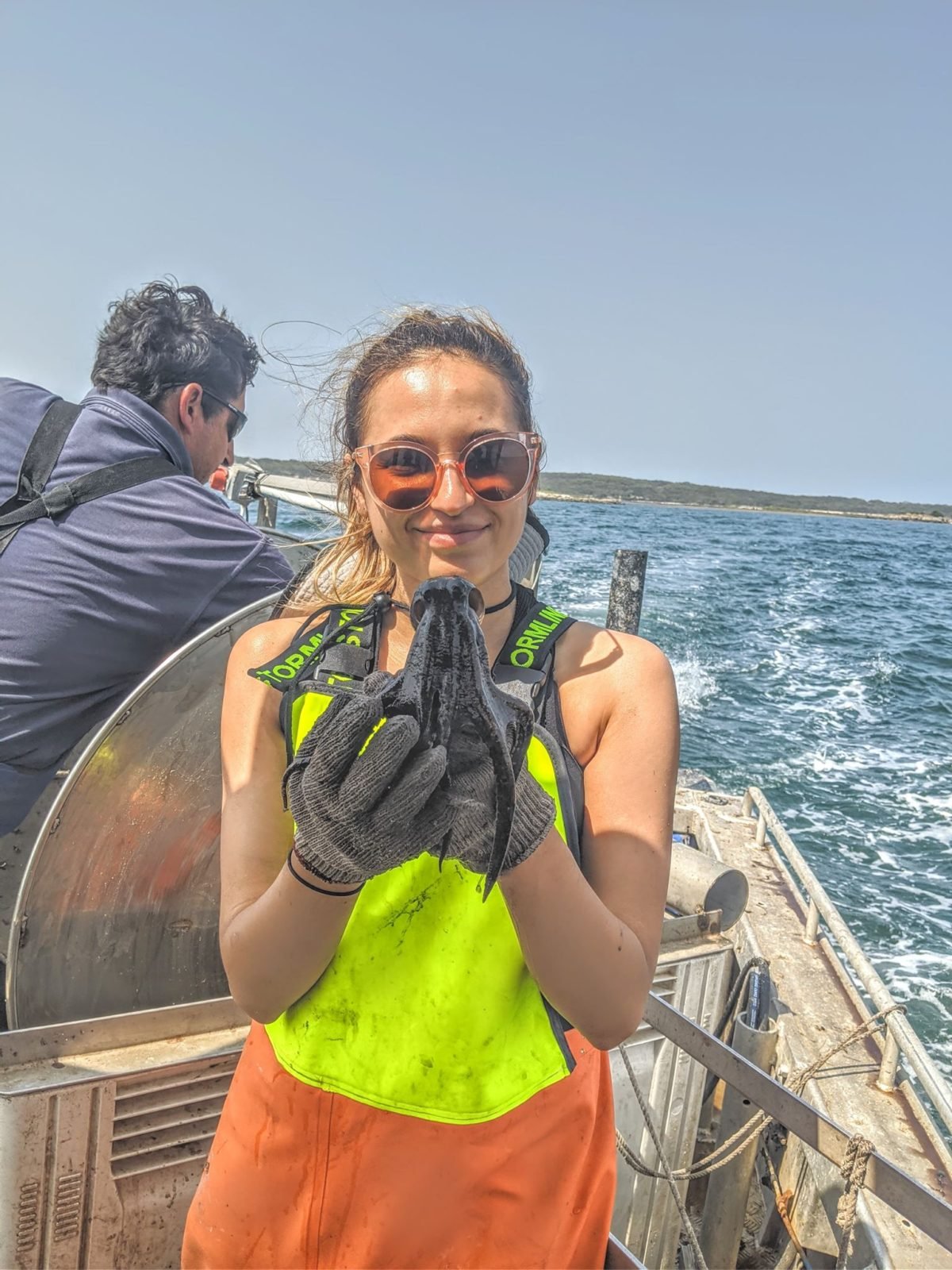Posted 7 Apr

Words by Sarah Keenihan.
Jasmin Martino drove from Adelaide to Eyre Peninsula and climbed on and off fishing boats multiple times in the first year of her postdoctoral research.
She was looking for octopus. But not for dinner. For science.
“My colleagues and I are working to know more about South Australia’s octopus populations,” Jasmin said.
“It’s important to understand the basic biology and ecology of these animals, plus we’d like to help make sure octopus fishing is sustainable now and in the future.”
Jasmin’s research at UniSA’s Future Industries Institute involves several layers of work, ranging from quite simple recording of basic octopus stats all the way down to detailed chemical analysis of tiny, poppy-seed-sized structures called statoliths. There are two statoliths in each octopus, and what they’re made of tells a story of the animal’s life.
Yes, octopus are smart, but they can’t talk, after all.
Lots of info from each octopus
Jasmin’s work has already revealed new information.
“Now we know there are three main octopus species living around the Eyre Peninsula that are caught for food,” Jasmin said.
The largest of these is the Maori octopus (Octopus maorum), which is typically caught as bycatch when it sneaks into rock lobster cages to grab an easy feed.
The two other species – the southern keeled octopus (Octopus berrima) and the pale octopus (Octopus pallidus) – are small enough to pick up in one hand.
Of these two smaller octopus, statistics suggest there are more females around than males, although that could be a biased result related to how animals are counted.
“We lay out tubes that females like to shelter in,” Jasmin explained.
“So it might just be that females are more likely to be caught because of this method.”
As well as identifying species and sex, Jasmin collected data on animal size and breeding potential (measured by counting eggs). A few octopus were humanely euthanised so further studies could take place back in the laboratory – things like review of stomach contents to look for plastics, and cells for genetic sequencing.
“We had these really hardcore eskies filled with ice, and would drive for eight hours to bring animals back to the lab to do dissections and process the various parts for analysis,” Jasmin said.
“We look to collect every last bit of data possible from each octopus, so we don’t waste anything.”
Tiny crystals tell a story
While other scientists have primarily taken on the genetic, evolutionary and age studies of the octopus, Jasmin herself is focusing on the chemical analysis of statoliths – those tiny little stone-like items found in each animal.
“Statoliths are the octopus equivalent of black boxes,” said Jasmin.
Black boxes are the data units in planes that crash scene investigators use to reveal what has gone on in the immediate past.
“Statoliths contain various elements you can use to map out the environmental and life histories of the octopuses,” Jasmin explained.
The elements Jasmin is able to measure in statoliths include strontium, phosphorus, potassium, barium and magnesium. She also measures different forms of carbon and oxygen, known as isotopes.
“I’m looking at the potential for oxygen isotopes to be indicators of environmental conditions, such as the saltiness and temperature of the water,” Jasmin said.
“That work will involve not just octopus statoliths, but also similar structures in fish (called otoliths) and the shells of abalone.”

Where an octopus grew up
One of the most exciting aspects of this work is to use the chemical markers as a way to pinpoint where an animal has come from, known as provenance.
Around the world, illegal and unsustainable fishing is a real problem. Provenance tools give fisheries managers the ability to pick up a fish or an octopus for sale in a shop, and work out if the label on the product matches where the fisher said he or she caught it.
For octopus it works particularly well because they tend to stay in a relatively small area for their entire lifetime.
“The octopus statoliths absorb the elements from the water around them, and these stay locked in,” Jasmin said.
Jasmin discovered that oxygen isotopes are different when you compare octopus that have lived in South Australia, Victoria, Tasmania, Indonesia and Vietnam, for example.
In the future, isotopes like this could be used to pinpoint fishing location.
“Chemical markers in statoliths are very hard to tamper with, and so it’s an accurate way to pick up seafood that has been labelled incorrectly,” said Jasmin.
Jasmin enjoys the circular nature of her work, knowing her results will feed back to guide ecology and fisheries management of octopus into the future.
“It’s really nice to know that every day I’m working towards sustainability,” Jasmin said.
“And I love working with the animals and being out on a boat, in the breeze and with the water all around me. It’s just gorgeous.”
